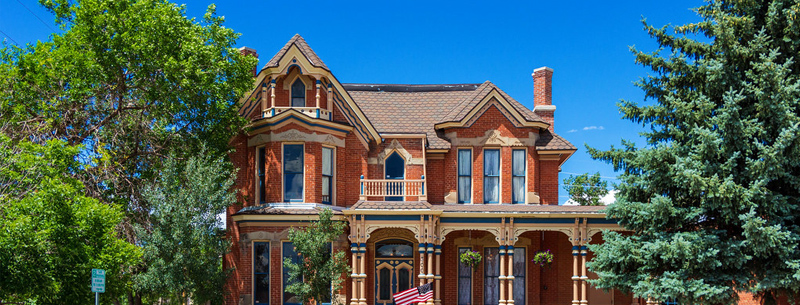Ithamar Whipple built his dream home 7 years before Wyoming Statehood, in 1883. It would be the Victorian-style showpiece of Cheyenne’s famous Cattle Baron’s Row. Whipple was a wealthy merchant and cattle baron, who founded the Wyoming Stockgrowers Association, and he supervised the construction of his home, which would soon become known simply as Whipple House. Whipple House still stands right there on 17th Street. Ah, but in its day, during Cheyenne’s Golden Age, this magnificent home was one of the elite residences in the Wyoming Territory.
Ithamar Whipple would later sell this local Cheyenne landmark to Territorial Supreme Court Justice John Lacey. Lacey was the man who defended notorious outlaw Tom Horn, and infamous oilman Harry Sinclair. Whipple House would eventually become a private Men’s Club before falling into complete disrepair. But then, in 1986, Whipple House was completely restored to its original state and listed on the National Register of Historic Places.
Tom Horn
Tom Horn is one of those real-life legends of early Wyoming. He came to Wyoming in the 1890s, which was a turbulent time in the state’s history. It was truly the Wild West in those days when Wyoming achieved Statehood. And in those years immediately following, Wyoming was beset with range wars and outlaws. Tom Horn was very much involved with both.
Tom Horn was making his way in Wyoming during the Butch Cassidy and the Wild Bunch days and was one of the members of the gang at one time. It was in this period of Tom Horn’s life that he had become known as the “fastest gun in the West”. Horn would later catch-on with the Swan Land and Cattle Company, the biggest in the entire region, covering a million acres of land at its height of operation. Tom Horn was officially employed as a stock detective, but he was said to have actually been hired as “muscle”. Apparently, Tom Horn was pretty good at putting the “scare” into people.
Then one day in 1903, a young boy by the name of Willie Nickel was killed in cold blood. Nickel was just 14-years old, and the local outrage was enormous. Well, it was the former outlaw, stock detective and hired-gun, Tom Horn, who was accused, tried for murder. and found guilty. And on a cold day in November of 1903, Tom Horn was hanged.
Interestingly enough, some 90 years later in 1993, Amnesty International contracted with a group of forensics experts and conducted a proper trial. And with the benefit of today’s modern forensic technology, and a dispassionate jury found Tom Horn not guilty of the murder of Willie Nickel.
Whipple-Lacey House Resources
Whipple-Lacey House – Welcome to the Wyoming State
wyoshpo.wyo.gov/index.php/programs/national-register/wyoming-listings/view-full-list/663-whipple-lacey-house
The Whipple-Lacey House, constructed in 1883, is located three blocks east of the center of downtown Cheyenne. The house was built by I. C. Whipple, early Cheyenne banker, business entrepreneur, and stockman. Later it was the home of Judge John W. Lacey. The house was built of red brick and trimmed with cut stone in a style that has been called …
Welcome to the Wyoming State Historic Preservation
wyoshpo.wyo.gov
Whipple-Lacey House 27 Feb 80 Cheyenne, Wyoming View is northeast, looking at chimney breast with inset stained glass panel on the west face of the building. Clayton Fraser State Historic Preservation Office
